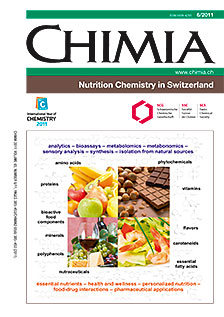Large-Scale Production of Bioactive Ingredients as Supplements for Healthy Human and Animal Nutrition
DOI:
https://doi.org/10.2533/chimia.2011.420Keywords:
Carotenoids, Catalysis, Chemical synthesis, Nutraceuticals, VitaminsAbstract
In this review, synthetic strategies and the development of environmentally benign methods for the production of economically important vitamins, carotenoids, and nutraceuticals used as food and feed supplements are illustrated by selected examples. The application of efficient catalytic transformations in multi-step chemical syntheses of such natural products enables technically feasible and cost-effective processes. For the preparation of fat-soluble (isoprenoid) vitamins A and E and the water-soluble vitamin (+)-biotin, homogeneous metal catalysis, including enantioselective transformations, heterogeneous and enzymatic catalysis serve as key methodologies. In the area of carotenoids, general building concepts and coupling methods for the total synthesis of ?-carotene and astaxanthin are discussed. Biotechnological methods and isolation from natural sources are also employed successfully, as exemplified for the xanthophyll lutein and the antioxidant (–)-epigallocatechin gallate. Lastly, key steps of the chemical synthesis of the polyphenol resveratrol are highlighted.Downloads
Published
2011-06-29
Issue
Section
Scientific Articles
License
Copyright (c) 2011 Swiss Chemical Society

This work is licensed under a Creative Commons Attribution-NonCommercial 4.0 International License.
How to Cite
[1]
B. Wüstenberg, R. T. Stemmler, U. Létinois, W. Bonrath, M. Hugentobler, T. Netscher, Chimia 2011, 65, 420, DOI: 10.2533/chimia.2011.420.







